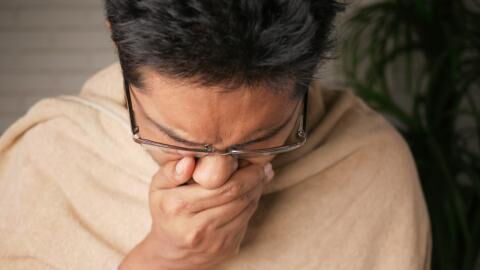The summer is rolling around again, and while temperatures are beginning to reach their peak, so is the pollen count. The MET office recently confirmed that the pollen count over the last few days had been considered ‘very high’, causing a wave of hay fever amongst sufferers.
Discover our latest podcast
With the pandemic still in progress, many people are getting their hay fever symptoms confused with coronavirus. Although the symptoms of these two conditions are similar, there are a few differences that might be worth keeping in mind.
How to tell the difference between hay fever and COVID-19
Allergy UK in partnership with Kleenex recently conducted a survey and found 56% of people with hay fever were worried others might mistake their symptoms for coronavirus. So, they decided to clear the air on the difference between hay fever and COVID.
Both COVID and hay fever share some similar symptoms, such as:
- Loss of smell
- Headaches
- Blocked noses
- Sinus pain
- Coughing
However, a few symptoms are unique to hay fever and aren’t typically present in COVID infections. For example, if you’re experiencing a runny or itchy nose, watery or itchy eyes and sneezing, then you probably just have hay fever.
If you think your symptoms could be attributed to coronavirus, look for clues such as a high temperature (over 37.8 degrees centigrade), a new cough that does not go away and shortness of breath. It might also be a good idea to consider if you could have recently come into contact with a COVID infected person.
Of course, the best way to tell the difference between your pollen allergy and COVID is to take a coronavirus test. COVID tests are available to order online, or you can make your way to your local walk or drive-in testing site.
How to manage hay fever
If you find yourself suffering from a bout of hay fever, there are a few things you can do to keep your symptoms at bay.
1. Over the counter treatments
There are many types of medications readily available at the pharmacy to quash your hay fever symptoms. From hay fever pills to sinus barrier creams and painkillers, you won’t have to feel a thing.
2. Monitor pollen forecasts
Your hay fever will no doubt be worse on high pollen days, so keep an eye out on pollen forecasts so you can plan ahead. Pollen counts are likely to be higher on warm, sunny days, while the rain will likely wash the spores away.
3. Wash your hair on high pollen days
If you go outside on a high pollen day, it’s best to shower as soon as you get home, wash your hair and change your clothes. This will help wash off any spores and ensure you don’t accidentally transfer them onto your pillows, sheets and clothing.
4. Avoid drying your clothes outside
Nothing smells better than laundry straight off the washing line. But, hanging your washing outside on high pollen days may result in pollen spores attaching themselves to all of your freshly cleaned fabrics. So, instead, dry your clothing inside or invest in a dryer.
5. Stock up on tissues
Lastly, but most importantly, don’t forget to stock up on tissues during hay fever season. Pop a pack in your bag, in your pocket, at your desk and even by the bed; you never know when you’re going to need to blow your nose or dry your eyes.















